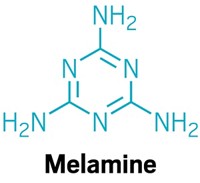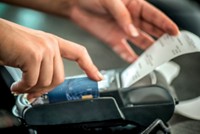Advertisement
Grab your lab coat. Let's get started
Welcome!
Welcome!
Create an account below to get 6 C&EN articles per month, receive newsletters and more - all free.
It seems this is your first time logging in online. Please enter the following information to continue.
As an ACS member you automatically get access to this site. All we need is few more details to create your reading experience.
Not you? Sign in with a different account.
Not you? Sign in with a different account.
ERROR 1
ERROR 1
ERROR 2
ERROR 2
ERROR 2
ERROR 2
ERROR 2
Password and Confirm password must match.
If you have an ACS member number, please enter it here so we can link this account to your membership. (optional)
ERROR 2
ACS values your privacy. By submitting your information, you are gaining access to C&EN and subscribing to our weekly newsletter. We use the information you provide to make your reading experience better, and we will never sell your data to third party members.
Policy
'Poison Squads' Tested Chemical Preservatives
by Bette Hileman
September 18, 2006
| A version of this story appeared in
Volume 84, Issue 38

In 1902, as Harvey W. Wiley, chief chemist at the Bureau of Chemistry, was trying to build support for a national food and drug law, he initiated what came to be called the "Poison Squad" studies. At the time, many questions were being raised about the safety and suitability of the chemicals used to preserve foods. Wiley decided that the easiest way to answer those questions would be to feed the substances, one at a time, to healthy volunteers along with their meals in what he termed "hygienic table trials."
According to the Food & Drug Administration's historian Suzanne White Junod, Congress approved the protocol of the studies. Their aim was to determine "whether preservatives should ever be used, and if so, what preservatives and in what quantity," she wrote in an article published in 2002 on the website of the Food & Drug Law Institute. Before human testing began, there were no animal studies, no lab tests, no oversight from institutional review boards, and no consent forms.
All of the volunteers were men; many were chemists. At any one time, only 12 volunteers participated in each squad, but over the course of five years, some dropped out and new men joined the groups. Each squad was used to test a single chemical. The men agreed to eat nothing except what was provided to them. In the dining room at the Bureau of Chemistry, they ate large doses of a preservative, along with nutritious meals.
Borax, salicylic acid, formaldehyde, saccharin, sodium benzoate, and copper salts were given to the men in gelatin capsules, which they swallowed halfway through the meals. The squad members were examined once a week by physicians from the Public Health & Marine Hospital Service.
Most of the volunteers reported only temporary discomfort from the preservatives, according to Wiley's final reports of the multiyear study. At the end of the testing period, Wiley wrote, the volunteers tended to be healthier than they were at the start of testing, probably because they had had nutritious meals for an extended period of time and had nothing to drink except water.
Wiley, however, was "alarmed by the adverse effects he observed in some volunteers." The chemicals made several men so sick they couldn't function. They had nausea and vomiting and were unable to do work of any kind. However, according to Junod, none sustained permanent illness or injury.
Wiley decided that if large amounts of a preservative caused even temporary discomfort in a volunteer, the chemical should not be used because there was no way to control how much any individual in the general population would receive. But at the end of the studies, formaldehyde was the only chemical that was outlawed as a preservative.
Many newspaper articles at the time informed the public about the Poison Squad, and as a result, Americans became much more interested in food safety, Junod said. Ira Remson, a Johns Hopkins professor of chemistry, later tried to duplicate the studies, and for most of the preservatives, he came up with different results, she said. Although Wiley's studies, which had no control groups, did not meet today's scientific standards, they were rigorous for their time, Junod explained.





Join the conversation
Contact the reporter
Submit a Letter to the Editor for publication
Engage with us on Twitter